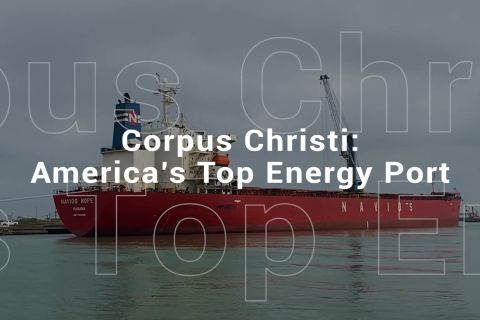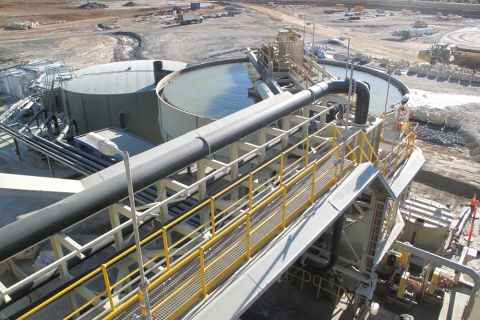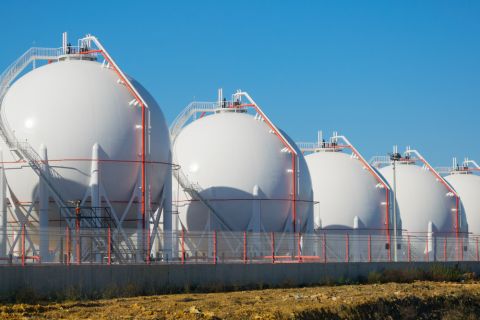
Louisiana black bears still roam the hardwood forests of the northern part of the state, a testament to a successful public-private conservation partnership and an indicator that, with time, even the unlikeliest plans work out in this region.
Like developing a somewhat obscure natural gas subplay in the middle of an epic downcycle.
The denizens of this area pride themselves on hunting, fishing, gaming, higher education (Grambling State and Louisiana Tech) and the recent delisting of the iconic bear (inspiration for the “Teddy Bear”) from the Federal Lists of Endangered and Threatened Wildlife after a 24-year campaign to protect 485,000 acres of habitat.
But 1.4 trillion cubic feet (Tcf) of gas in the area’s Terryville Complex cannot be ignored, especially when the economics appear to be so promising.
In its latest ranking of U.S. gas fields by 2013 estimated proved reserves released last year, the U.S. Energy Information Administration listed the Terryville Complex at No. 38. Production was around 27 billion cubic feet (Bcf), nothing special among the top fields, except that the pull-backs affecting so many plays around North America are a bit more quietly restrained in the Terryville.
Houston-based Memorial Resource Development Corp. (MRD) is committed to this play and doesn’t seem inclined to back off from it any time soon.
“MRD has fl own under the radar a little bit,” Clay Lightfoot, research analyst with Wood Mackenzie’s Lower 48 team, told Midstream Business. “They’re kind of siloed out there in the Terryville Complex to the east of the traditional Haynesville-Cotton Valley area.”
The company has transitioned to a pure play in the Terryville, he said, and is intensifying its efforts in the region.
“So far, they’ve reported really promising well results,” he said. “They continue to double down and they have a relatively aggressive drilling schedule for 2016. A lot of people are dropping rigs and they did, too, but four rigs in 2016 is still significant and that shows that they’re still faring well in the current environment.”

Memorial increased its production by 72% in 2015 to 345 million cubic feet per day (MMcf/d), putting 33 wells online with an average 30-day initial production of 21.7 MMcf/d.
“Our horizontal wells in the Terryville Field represent some of the most economic wells in the country and generate compelling returns on an unhedged basis, even at today’s strip,” the company’s CEO, Jay Graham, told analysts during its fourth-quarter 2015 earnings call.
World-class potential
Last September, PennTex Midstream Partners LP launched operations at its Mt. Olive cryogenic natural gas processing plant near Ruston, La. The 200 MMcf/d capacity facility comes with on-site liquids handling capabilities for inlet gas.
Its opening doubled PennTex’s gas processing capacity in Terryville. Just four months earlier, the company started up its plant in Lincoln Parish, La., with capacity of 200 MMcf/d along with a 31-mile system of gas gathering and residue gas transportation pipelines.
The newest plant’s 14-mile residue gas pipeline has throughput capacity of about 400 MMcf/d. Its 41-mile NGL pipeline has a capacity of 36,000 barrels per day and connects Mt. Olive’s processing plants to downstream markets.
While designed capacity in Terryville may be 400 MMcf/d, average throughput only reached 272 MMcf/d in the first full quarter with both plants online, Steve Jones, PennTex’s executive vice president and CFO told analysts during the fourth-quarter 2015 earnings call. That will increase to 400 MMcf/d of firm capacity in the second half of the year.
PennTex has a rather symbiotic relationship with MRD. Both are uniquely and heavily committed to the Terryville Complex and both are convinced of its world-class potential. If Terryville can emerge as an important play, especially given its proximity to the LNG export facilities coming online on the Gulf Coast, then the risk taken by both will have been well calculated.
Good results, but pricey
Just how encouraging is the Upper Jurassic rock of the Terryville Complex for sustainable natural gas production?
Earlier numbers from northern Louisiana wells show superior results to wells in the Marcellus, though these figures, at face value, may be somewhat misleading.
“They certainly have some excellent well results,” Lightfoot said. “Right now their 30-day IP [initial production] rate is averaging around 21 MMcf/d. Further west in the Cotton Valley, I would say good IP rates tend to be around 12.5 MMcf/d.”
Even the Susquehanna Core of the mighty Marcellus only pulls IP rates that average around 17 MMcf/d. But Wood Mac’s Lightfoot sees that as akin to an apples-to-oranges comparison.

“They are dealing with a much larger data set in the Northeast,” he said. “We have a well analysis tool internally that has over 19,000 wells in the Marcellus alone. In contrast, in the Cotton Valley, if you look at just horizontal wells, it’s closer to between 1,000 and 2,000, so it’s about 5% of the wells.”
So certainly wells in Terryville are competitive with those in the big Northeast plays, but not to a game-changing extent, i.e., there’s no danger that a trend of abandoning the Marcellus and Utica for Northern Louisiana will take hold.
“It’s tough to compete with the Marcellus,” Lightfoot said. “It’s such a known, repeatable source across much of the area. We show it represents about 25% of U.S. gas supply and there’s still running room there.”
It’s also cheaper.
“The Susquehanna Core is getting EURs [estimated ultimate recoveries] of around 17 Bcfe [billion cubic feet equivalent] and they’re doing it at much lower costs than what MRD is paying in the Cotton Valley,” he said. “I would say, on average, $6 million to $6.5 million per well in the Marcellus vs. what MRD is paying right now in the $11 million range.”
In the Utica, well economics vary fairly dramatically across the play, he said.
In general, Wood Mac’s analysis shows breakevens for these subplays in the Utica as ranging from about $2.80 per Mcf to over $10. Cotton Valley is at the higher end of costs; Marcellus is on the lower end; Utica is somewhere in the middle.
Hedge position
But can the Terryville Complex be economic in this low-price environment?
“I think you’d be hard-pressed to find many assets at all that are economic at $1.70/Mcf,” Lightfoot said, referring to the Henry Hub benchmark price for natural gas in early March. “MRD mentioned that they generate a large portion of their EURs in the first few years of production. In that respect, they are able to accelerate cash flows and bring that value forward in order to boost returns. But I’d also point out, they have extraordinary IRRs [internal rates of return]. All of those calculations assume $2.50 gas prices and $50 oil.”
Another aspect that impresses Lightfoot and his Wood Mac colleagues is Memorial’s hedge position.
“Until 2016, they had about 70% of production hedged at $3.70 to $3.75 and then they just restructured their hedge positions and are essentially 100% hedged of production in 2016 at over $4,” he said. “That’s a pretty incredible place to be and they’ve built in a solid cushion for themselves.”
PennTex’s fortunes in the Terryville hinge on Memorial’s ability to cut costs and increase volumes. So far, the producer seems to be succeeding in the former.
“MRD’s first 13 wells of 2016 had an average [drilling and completion] cost of $10.7 million vs. its 2015 guidance of $11.8 million,” noted Baird Equity Research in its fourth-quarter report on PennTex. “MRD’s 2016 production guidance does not factor in these lower well costs. MRD stated that any additional savings on [drilling and completion] costs would most likely be put back to completing additional [drilled but not completed wells] in 2H16, if gas prices improve.”
On the latter, Memorial is heading in the other direction. The company’s guidance, that it will live within its cash flow, means that the average rig count of four for this year will be half that of last year, J.P. Morgan Chase & Co. noted in a recent report. J.P. Morgan’s Michael Click, who covers small- and mid-cap E&Ps, interpreted that as an expectation of 390 MMcfe/d to 420 MMcfe/d.
“Lower MRD growth affords balance sheet strength,” the bank’s analysts wrote, “which for [PennTex] is the higher priority in the current environment.”
J.P. Morgan projected lower EBITDA for PennTex than most on Wall Street for fourth-quarter 2015—$14 million—but the midstream operator still came up short with $12.8 million.
Plant delay
Until oil and gas prices are reliably restored to health, expansion plans, like a third gas processing plant in the area, will be difficult to justify. Though acknowledging the delay, Karam insisted that the company remained on track, just that it was a longer track.
“I don’t think that the opportunity set has changed at all or changed much,” he told an analyst during the earnings call. “I did, I think … state that the opportunity set may, in fact, have grown because of the additional acreage that MRD acquired to the south that does not have any infrastructure.”
But little indication of a break from the industry’s doldrums has slowed E&Ps and their partners in the midstream, he said. “So most of the projects that we thought were going to be more near term have been pushed out, given the environment.”
J.P. Morgan expressed confidence that increased volumes would warrant a third plant in a report dated last November. One quarter later, that optimism had ebbed.
“With reduced MRD drilling plans, we don’t expect any new projects at PTXP [PennTex] other than new well connects in 2016,” the analysts wrote.
“Into 2017, we look to Permian assets held by the sponsor as potential drop-down growth.”
Baird’s outlook was similar.
“We push back our estimate for a third Terryville plant from second-quarter 2017 to third-quarter 2018 and expect capex will begin in third-quarter 2017,” the analysts wrote. “Additionally, PennTex’s private board approved a Permian plant build at the private entity level. We model a $60 million dropdown of the asset in fourth-quarter 2017 at an 8.0x multiple.”
No need for more
Lightfoot’s take is that the region just doesn’t need much more infrastructure, at least not yet.
“When I think about midstream in the area—more broadly because it includes the Haynesville and the whole area—I think of it as being overbuilt,” he said. “If you go back to when the Haynesville launched in 2008, midstream shot up with it.”
The play’s production peaked around 2010 and then fell off. Midstream companies were still OK, buoyed by life-of-lease contracts they had locked in with the early entrants that were really anchor producers, Lightfoot said.
“Nowadays, midstream contracts are much more short term,” he added. “It’s an interesting geographical location and I think from that respect it really stands to benefit MRD because of its proximity to the Gulf Coast. It’s going to bring down the transport costs incredibly compared to more land-locked areas.”
Good for producers, but midstream players looking for growth are looking elsewhere.
“We don’t expect much more major pipeline build until maybe 2025, based on supply and demand fundamentals,” Lightfoot said. “Right now, we see ample channels of takeaway capacity to Gulf Coast markets. LNG exports are going to bring on a lot of new demand by 2025 and you have the industrial buildout from fertilizer and methanol plants. All those are going to play into MRD being well positioned in the Gulf Coast area.”
Recommended Reading
Yellen Expects Further Sanctions on Iran, Oil Exports Possible Target
2024-04-16 - U.S. Treasury Secretary Janet Yellen intends to hit Iran with new sanctions in coming days due to its unprecedented attack on Israel.
CEO: Linde Not Affected by Latest US Green Subsidies Package Updates
2024-02-07 - Linde CEO Sanjiv Lamba on Feb. 6 said recent updates to U.S. Inflation Reduction Act subsidies for clean energy projects will not affect the company's current projects in the United States.
Global Energy Watch: Corpus Christi Earns Designation as America's Top Energy Port
2024-02-06 - The Port of Corpus Christi began operations in 1926. Strategically located near major Texas oil and gas production, the port is now the U.S.’ largest energy export gateway, with the Permian Basin in particular a key beneficiary.
NAPE: In Basins Familiar to E&Ps, Lithium Rush Offers Little Gold
2024-02-07 - A quest for sources of lithium comes as the lucrative element is expected to play a part in global efforts to lower emissions, but in many areas the economics are challenging.
Wanted: National Gas Strategy for Utilities, LNG
2024-02-07 - Chesapeake CEO Nick Dell’Osso and Mercator Energy President John Harpole, speaking at NAPE, said some government decision-makers have yet to catch on to changes spreading across the natural gas market.



